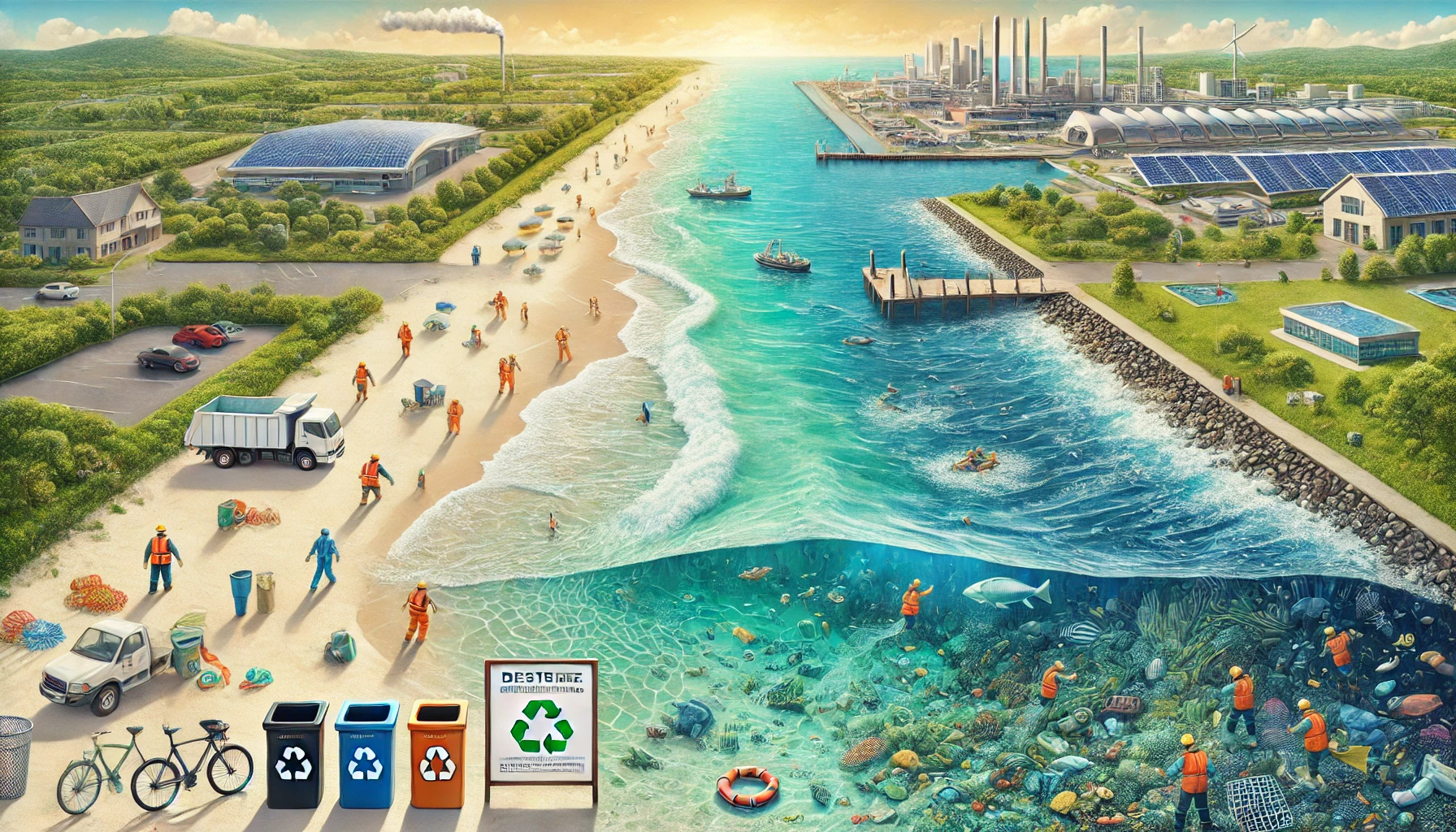Comprehensive Solutions for Plastic Pollution: A Policy and Action Blueprint
The World Bank's report provides a structured framework and tools to help governments tackle plastic pollution through baseline analysis, solution assessment, financial planning, and monitoring. It emphasizes stakeholder collaboration, data-driven decision-making, and capacity building to create sustainable and impactful national action plans.

The World Bank’s report, developed with contributions from UNEP, IUCN, and leading academic and policy-focused institutions, addresses the urgent issue of plastic pollution. The report outlines a structured approach to help national governments create effective action plans. Plastic pollution, a critical global problem affecting ecosystems, human health, and livelihoods, has spurred international efforts toward a legally binding "Plastic Treaty." This treaty aims to unify global strategies to curb the plastic crisis. The report emphasizes a four-step framework: conducting baseline analyses, evaluating solutions, determining financial needs, and implementing actions with monitoring systems. It introduces an array of tools designed to align with diverse local contexts, providing a practical guide for governments to transition toward sustainable plastic management.
Mapping the Problem: Understanding Plastic Flows and Leakage
The first step, conducting a baseline analysis, is crucial for comprehending the scope of plastic pollution. This involves quantifying plastic flows, identifying leakage points, and reviewing governance and legislative frameworks. Tools such as the UNEP/IUCN Hotspotting Toolkit integrate data analysis, GIS mapping, and stakeholder engagement to pinpoint problem areas. This toolkit provides detailed metrics on plastic production, waste management, and environmental leakage, forming the foundation for actionable insights. Another notable tool, the Product-Lifespan Toolkit, uses trade data to estimate the life cycles of various plastic products, focusing on upstream activities like production and consumption. For countries with limited resources, the Material Flow Analysis Toolkit offers a simpler alternative to analyze municipal waste flows and identify points of mismanagement. These tools are pivotal in establishing evidence-based strategies and setting priorities.
Designing Solutions: Evaluating Policy Interventions
The next step involves assessing potential solutions through a range of tools that evaluate interventions based on environmental, social, and economic criteria. The World Bank’s Plastic Policy Simulator is a standout resource, allowing policymakers to simulate outcomes of measures such as bans, taxes, and expanded recycling systems. It quantifies impacts on plastic leakage, greenhouse gas emissions, job creation, and system costs, providing a comprehensive view of trade-offs. Similarly, the Plastic Drawdown model, developed by Common Seas, simplifies this process by focusing on the most common plastic items found in marine litter. It evaluates 18 interventions, including bans on single-use plastics and improved waste collection systems. Meanwhile, the Breaking the Plastic Waves Pathways Tool uses dynamic modeling to forecast long-term impacts, enabling governments to prioritize strategies with the greatest effect. These tools collectively facilitate data-driven decision-making and help align diverse stakeholders around actionable goals.
Financing the Fight: Addressing Resource Needs
Despite progress in identifying and evaluating solutions, a critical gap remains in tools designed for financial planning. Effective implementation of plastic management plans requires sustainable funding for infrastructure and operational needs. The PlastInvest tool, created by the World Bank and Systemiq, addresses this challenge by estimating capital and operational funding requirements across intervention scenarios. It provides insights into public-private investment opportunities, aligning with other tools like the Plastic Policy Simulator to offer integrated financial perspectives. However, the report underscores the need for additional tools to bridge the gap between planning and execution, particularly for assessing financial sustainability and operational readiness. Expanding resources in this area is vital for ensuring the success of national plastic action plans.
Turning Plans into Action: Monitoring and Adapting Strategies
The final step, implementing actions and monitoring impacts, is often the most complex. Tools like the Hotspotting Toolkit and Plastic Drawdown include modules for evaluating progress and refining strategies. Setting measurable targets during the planning phase is critical to ensure effective monitoring. The report highlights the importance of strong institutional frameworks to oversee implementation, enforce regulations, and ensure accountability. Adaptive management practices, which allow governments to revise strategies based on real-time data and emerging challenges, are also emphasized. Monitoring systems must account for both direct impacts, such as reductions in plastic leakage, and indirect outcomes like improved livelihoods and reduced greenhouse gas emissions.
Paving the Way for Global Solutions
The report emphasizes the importance of harmonizing data inputs and outputs to improve comparability across studies. Discrepancies in data, particularly regarding waste composition and generation rates, can undermine the accuracy of analyses and the effectiveness of interventions. To address this, the report advocates for standardized typologies and definitions alongside robust data-sharing platforms like the Global Partnership on Plastic Pollution and Marine Litter Digital Platform. Furthermore, it calls for greater attention to the lifecycle impacts of plastics, including the effects of additives, microplastics, and legacy pollution already present in the environment. These less-explored aspects require innovative tools and methodologies to ensure a holistic approach to plastic management.
The report also underscores the need for capacity building and stakeholder collaboration. Policymakers, practitioners, and communities must work together to implement effective solutions. By providing a comprehensive roadmap, the report equips governments with the knowledge and tools to navigate the complexities of plastic management. It serves as both a guide for immediate action and a call to innovate and expand resources for sustainable, evidence-based decision-making in the fight against plastic pollution. With its structured framework and actionable insights, the report lays the foundation for a coordinated global response to one of the most pressing environmental challenges of our time.
- FIRST PUBLISHED IN:
- Devdiscourse










